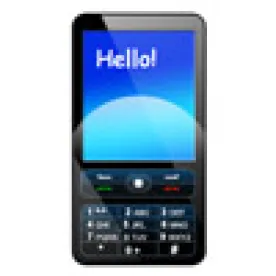Takeaway: In a Covered Business Method proceeding, Petitioner is permitted to argue that the challenged claims are directed to patent ineligible subject matter under 35 U.S.C. § 101.
In its Decision, the Board instituted a covered business method patent review of claims 1, 8, and 16-17 of U.S. Patent No. 6,658,464 B2. The ‘464 patent relates to “a method and corresponding software for operating a user station for communications with a multiplicity of independently-operated data sources via a non-proprietary network.”
The Board began with claim construction. Because the parties agree that the ‘464 patent has expired, the Board interpreted the claims similarly to how a district court would, giving claim terms their ordinary and customary meaning, as would be understood by a person of ordinary skill in the art, at the time of the invention, in light of the language of the claims, the specification, and the prosecution history of record. Phillips v. AWH Corp., 415 F.3d 1303, 1313–1317 (Fed. Cir. 2005) (en banc). According to the Board, Petitioner offered constructions of two claim terms from the related district court litigation, stating that “they represent a District Court’s application of the Phillips principles,” though Petitioner did not advocate for these constructions. Petitioner also noted that District Court determined no order of steps is required by the claim. Patent Owner argued that the Petition should be denied because it does not “propose any construction for any claim term of any challenged claim.” The Board, however, determined that it was sufficient that Petitioner indicated that the Phillips standard applies. Patent Owner then argued that claim 1 requires the operations to be performed in the order set forth in the claim. After finding that “[e]ach instruction refers to the results of the previous step,” and determining that Figure 6 is consistent with that interpretation, the Board agreed with Patent Owner that the claim requires the operations to be performed in the order presented.
The Board then considered the threshold question of whether the ‘464 patent is a “covered business method patent” and rejected Patent Owner’s arguments that it is not. Under the America Invents Act, a “covered business method patent” is a patent that “claims a method or corresponding apparatus for performing data processing or other operations used in the practice, administration, or management of a financial product or service, except that the term does not include patents for technological inventions.” AIA § 18(d)(1); 37 C.F.R. § 42.301(a).
The Board began with the comment that “a ‘financial product or service’. . . is not limited to the financial services industry (sector)” and then noted that “Petitioner need only demonstrate that a single claim meets the financial product or service requirement.” The Board further concluded that the legislative history of the AIA demonstrates that “the phrase ‘financial product or service’ is to be interpreted broadly.” The Board also stated that “it is not required that the claims themselves explicitly recite a financial limitation” and that “it is enough that the Specification indicates the claimed method has such application.” The Board then concluded that “at least one claim of the ’464 patent covers data processing or other operations used in the practice, administration, or management of a financial service.”
The Board then considered whether the ‘464 patent is directed to a “technological invention.” To determine whether a patent is directed to a technological invention, and therefore ineligible for covered business method patent review, the Board considers: (1) whether the claimed subject matter as a whole recites a technological feature that is novel and unobvious over the prior art; and (2) solves a technical problem using a technical solution. 37 C.F.R. § 42.301(b). According to the Board, “[t]he Specification describes that the problem faced was to make distribution of electronic information quicker and less expensive. On its face this is not a technical problem.” The Board further stated that “Petitioner has demonstrated that the hardware and software steps (other than sequence) were known technologies. Nothing in the ‘464 Specification suggests that the sequence of steps provided an unexpected result.” Ultimately, the Board concluded that “the claimed subject matter, as a whole, does not recite a technological feature that is novel and non-obvious over the prior art, the ‘464 patent is not directed to a technological invention” and, thus, Petitioner demonstrated that the ‘464 patent is a covered business method patent.
Finally, turning to the merits, the Board next addressed Petitioner’s argument that Claims 1, 8, 16, and 17 are directed to patent ineligible subject matter under 35 U.S.C. § 101. In this case, Patent Owner did not contest the merits of Petitioner’s assertion but instead argued only that 35 U.S.C. § 101 is not a proper ground to raise in a CBM proceeding. The Board rejected the Patent Owner’s argument and then concluded that the challenged claims are “are directed to the abstract concept of selecting, transporting, storing, and displaying content” and that the “claims are directed to ‘nothing significantly more’ than applying an abstract idea on a generic computer system, which is not enough to transform an abstract idea into a patent-eligible invention.” Accordingly, the Board concluded that “Petitioner has demonstrated that claims 1, 8, 16, and 17 are more likely than not directed to patent ineligible subject matter under 35 U.S.C. § 101.”
Motorola Mobility, LLC v. Intellectual Ventures I, LLC, IPR2015-00004
Paper 9: Decision on Institution of Covered Business Method Patent Review
Dated: March 27, 2015
Before: Jameson Lee, Phillip J. Kauffman, and Jo-Anne M. Kokoski
Written by: Kauffman
Related Proceedings: Intellectual Ventures I. et al. v. Motorola Mobility, Inc., Civil Action No. 11-908 (SLR) (D. Del) (filed Oct. 6, 2011); CBM2014-00084; CBM2015-00005; 95/002,093; 90/013,205



 />i
/>i

